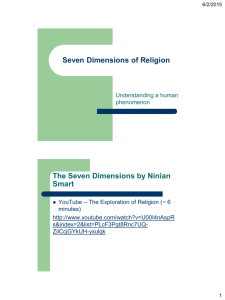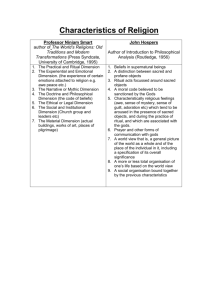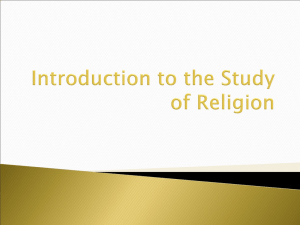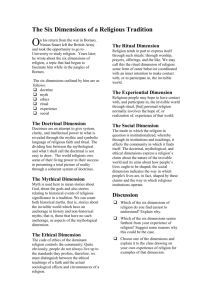Ninian Smart's 6 dimensions of religion
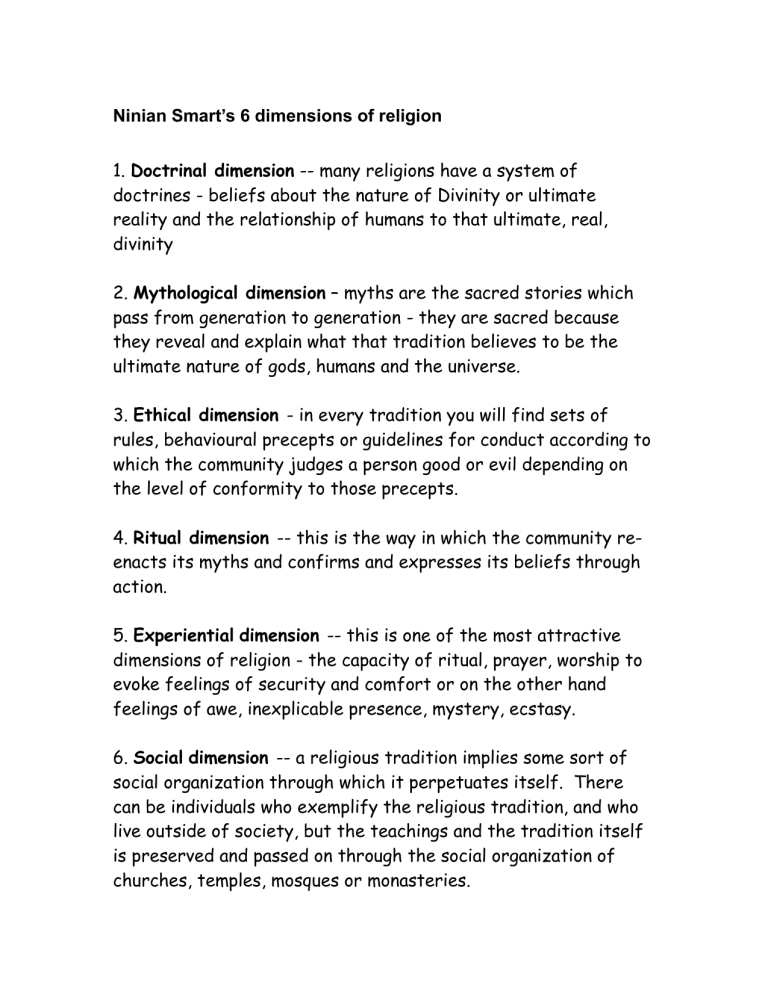
Ninian Smart’s 6 dimensions of religion
1. Doctrinal dimension -- many religions have a system of doctrines - beliefs about the nature of Divinity or ultimate reality and the relationship of humans to that ultimate, real, divinity
2. Mythological dimension – myths are the sacred stories which pass from generation to generation - they are sacred because they reveal and explain what that tradition believes to be the ultimate nature of gods, humans and the universe.
3. Ethical dimension - in every tradition you will find sets of rules, behavioural precepts or guidelines for conduct according to which the community judges a person good or evil depending on the level of conformity to those precepts.
4. Ritual dimension -- this is the way in which the community reenacts its myths and confirms and expresses its beliefs through action.
5. Experiential dimension -- this is one of the most attractive dimensions of religion - the capacity of ritual, prayer, worship to evoke feelings of security and comfort or on the other hand feelings of awe, inexplicable presence, mystery, ecstasy.
6. Social dimension -- a religious tradition implies some sort of social organization through which it perpetuates itself. There can be individuals who exemplify the religious tradition, and who live outside of society, but the teachings and the tradition itself is preserved and passed on through the social organization of churches, temples, mosques or monasteries.
